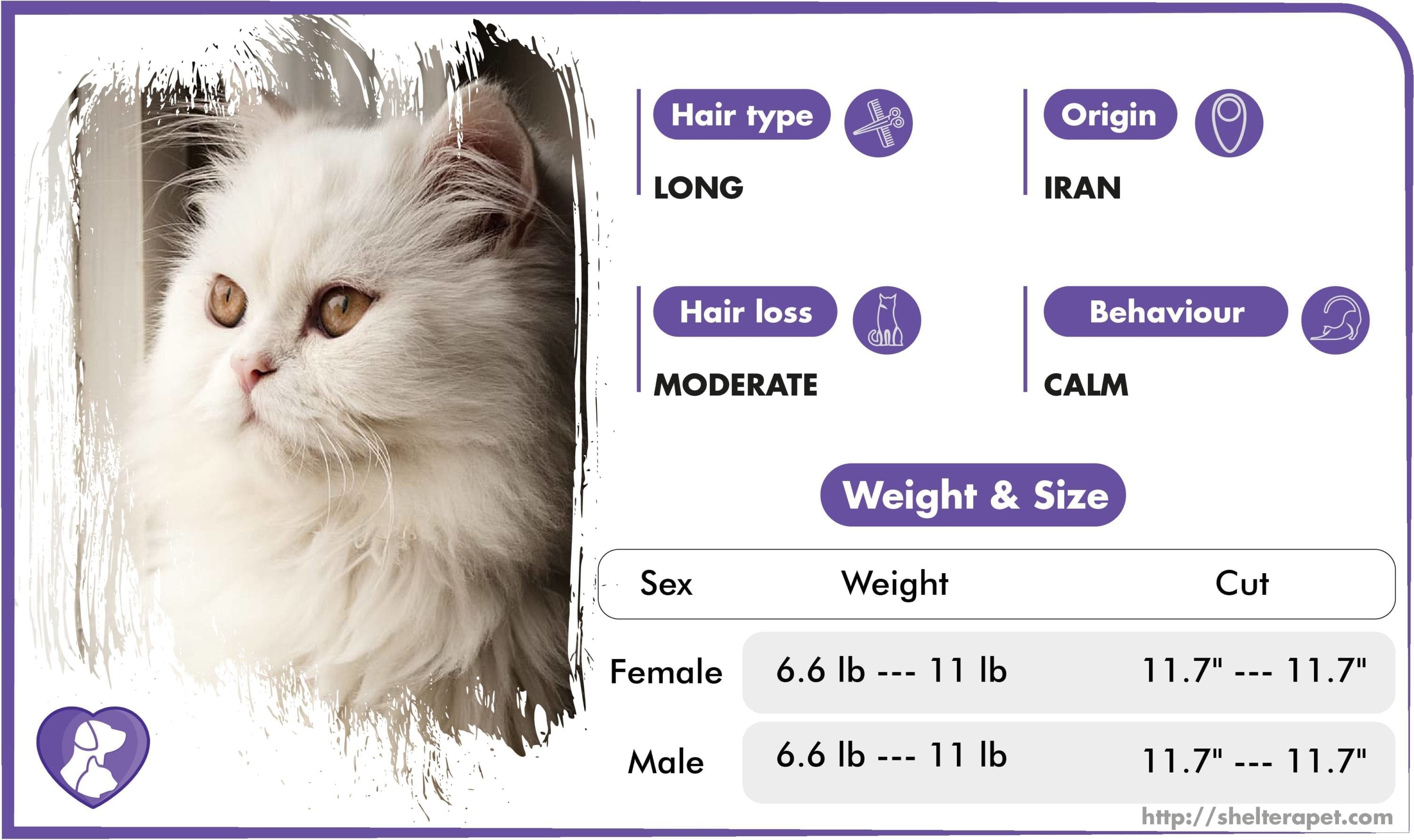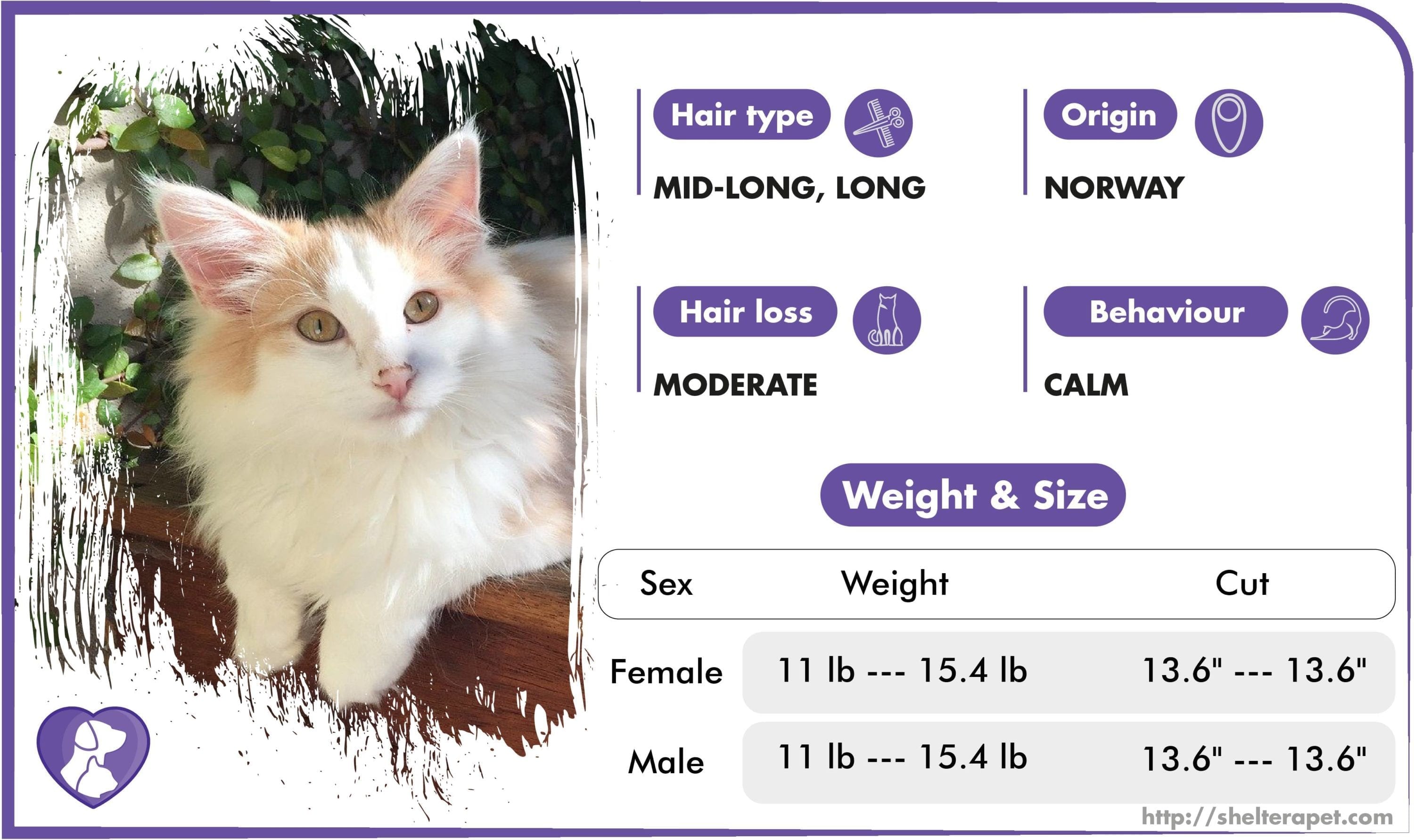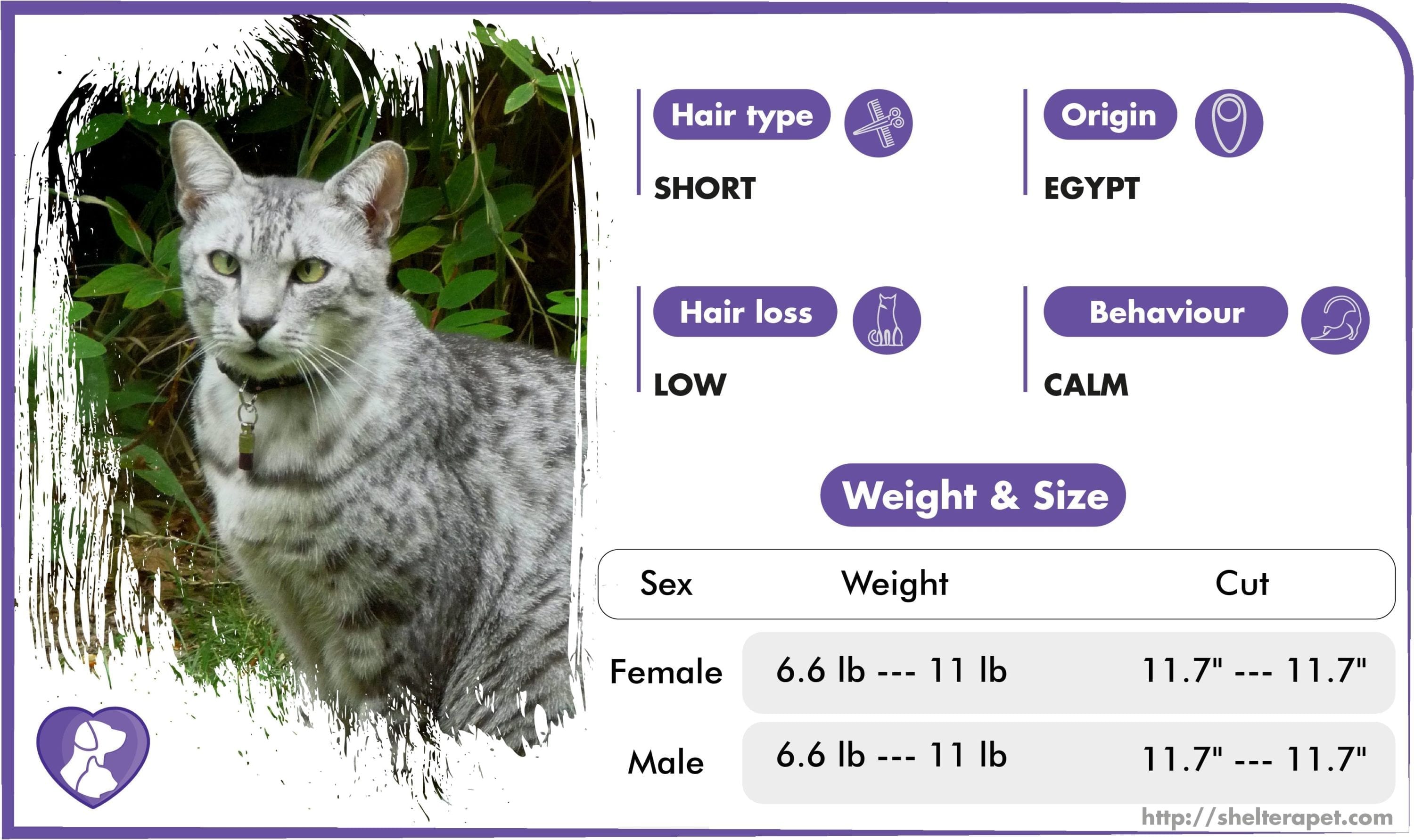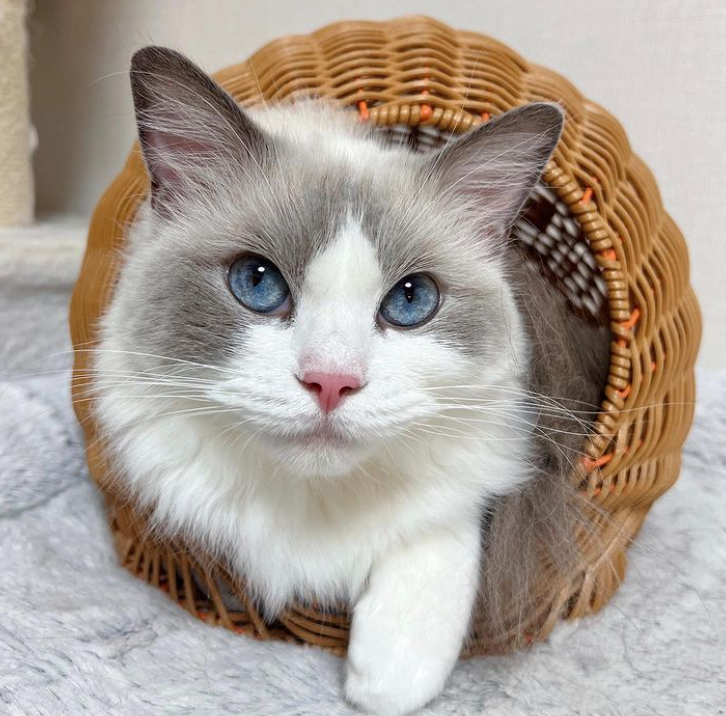If like us, you find cats with gray and white coats to be among the most beautiful cats, let us tell you a little more about them.
You are probably wondering what breed they belong to. The answer does not hold in one line, there are indeed many breeds of cats that can sport this type of fur.
At Shelterapet, as you know, we are passionate about cats. Our experts have offered you for the occasion a summary of all the gray and white cat breeds.
After reading this article, you will know all about this type of cat!
Does the color of a cat’s coat influence its character?
According to some studies, yes. Of course, other factors come into play, such as education, race, and genetics. However, certain characteristics are found in cats of the same color, regardless of their breed.
Gray and white cats, just like black and white cats, are known for their strong character. According to studies, they tend to have an easy paw at humans, don’t particularly like to be held in the arms, and quickly get their claws out!
Rest assured, all of these studies should not be taken literally; there are always exceptions. As seen above, many other factors come into play in the character of cats.
Now to the cat breeds list with a dress gray and white.
Some breeds are not characterized only by their color. This is the case for some present in this list in which you will find for example the Norwegian, who does not necessarily have gray and white fur as a standard color, but they can have it.
The different breeds of gray and white cats
Grey Ragdoll Cat
At birth, the fur of the Ragdoll kitten is white. The color appears gradually during the first months. Ragdoll only obtains its final color at the age of three. You can see the evolution of the dress below, on the “colors” part.
- Seal
- Blue: dilution of the seal (gray color)
- Chocolate
- Lilac: chocolate dilution (gray color)
- the Colorpoint
- the mitted
- the high mitted
- the two-tone
- the mid-high white
- the van / high white

The Munchkin
The Munchkin comes in two different coat lengths: short and mid-length. Mid-haired Munchkins are called Munchkins Longhair. Its short and very fluffy coat (short-haired cats) or semi-long and silky (half-long haired cats) perfectly hugs Its muscular body.
The Munchkin comes in every imaginable fur color: from black and white to red, through gray, with different accents. All eye colors are also accepted.

The Persian cat
Persian cats exhibit a wide range of colors and patterns. More than 150 varieties of Persians are recognized, but there are more than 300!
All colors are accepted: black, blue, red, chocolate, cream, white, grey, cream blue, cinnamon, silver (silver), golden (gold), cameo (shades of red). These colors can appear in one of the following coat types: solid (solid), two-tone, harlequin, van, tortoiseshell, marbled tabby, tabby, speckled tabby, ticked tabby, or smoke (discolored hairs at the base ).
Each combination of color and type of dress constitutes a variety. We also find Persian chinchillas (dark color at the end of each hair), which come in two varieties: silver shaded and golden shaded.

The Tabby cat
The tabby cat, whether gray, orange, or brown in color, are cats that are present in millions of homes since it is a very widespread species today, which largely reminds us of wild cats or how their cats must have been. ancestors, thousands of years ago.
Its beautiful combination of mottled, speckled, or striped patterns in different tones, gives us the idea of whimsical genetics
Silver Tabby – These cats have a silver undercoat that accentuates their shiny fur and accentuated gray and black or white markings, giving them an elegant and very special look.
Those who live with them can attest that they are affectionate, mischievous, sometimes lazy cats (they tend to gain weight perhaps more than other cats) and funny. They like pampering and will not miss a good opportunity to play and have fun if you encourage them. Tabby cats retain those “wild” genes and sometimes, they will be able to do some mischief at home.

The Norwegian forest cat
All known basic colors are allowed in the Norwegian cat, and combinations with white are also allowed. Whether it’s brindle, tabby, speckled or ticked, black, blue, amber, white & grey, or even tortoiseshell, all dresses are allowed! The Norwegian cat is always a pleasure for the eyes! The colors ” chocolate “, ” lilac ” as well as ” cinnamon ” and ” fawn ” are the only colors excluded from the breed standard
Like the Maine Coon and the ragdoll, the Norwegian cat belongs to the family of half-long haired cats. Its double-layered fur is made up of a waterproof coat and a dense undercoat. Like Siberians, the Norwegian forest cat moults and changes fur according to the seasons.
In winter, the undercoat is particularly fluffy and thick, which warms the Norwegian cat against the freezing cold of Norway. When they shed their dense, fluffy undercoat, they are then ready for a dry and hot North European summer.

Egyptian Mau
The Egyptian Mau belongs to the category of short-haired cats. It is often said that Its face wears an attentive expression, some even say It`s worried. Indeed, the Egyptian cat always observes its environment and its owners with an alert and curious gaze, and nothing escapes It.
The head of this beautiful beast is angular and slightly rounded, its ears are medium to large in size, its eyes are almond-shaped. If a human’s eyes were, in proportion to the size of their head, as big as a cat’s, those eyes would be the size of tennis balls.
The Egyptian Mau is a medium-sized cat. It`s at the same time graceful, almost delicate, but also muscular and sporty. It`s a bit stockier than the oriental shorthair. Its physique may therefore seem a little different from the representation made of it in Egyptian paintings, where Egyptian Mau tends to be thinner. Females of this breed are generally smaller and lighter than males.
The physical peculiarity of the Egyptian cat lies in the speckles of its fur.
The breed standard recognizes three coat colors:
- Silver : black silver spotted tabby
- Bronze: light brown black spotted tabby (basic brown tone with dark brown to black dots, black dots preferred)
- Black smoke : (gray-black base color, through which white-silver hairs point, so that black dots appear more)
A white and grey variant also exists, but this color is not recognized as a breed standard.

Scottish folds
Today, the number of colors of Scottish folds includes a hundred variations. And the color of the coat of the Scottish cat is not immediately defined. In six months the kitten waits for the first molt, after which the kitten’s fur turns into an adult. Later, the colors can still be slightly changed and finally established only after two years.
The Scots have 2 main genes responsible for the red and black colors of the fur. In addition, there is a third gene, called a diluent, which determines the saturation of the pigment. One of the two main genes gains the upper hand, a combination occurs in a different order, as a result of which different colors are obtained from the Scottish folds.
It is because of such a set of genes that black took on a bluish color, chocolate – purple, etc. Even during color formation, factors such as the degree of coloring of each hair and the presence of spots and patterns are important. Among the Scottish folds, there are also white individuals. This means that they do not have a gene responsible for the color and the deletion of a gene of a given color by other genes.
For these colors, cats are characterized by uniform dyeing of the coat. If there are spots, then this color refers to non-monotonous. Due to the presence of such a small defect, the price of a kitten is reduced. This group includes:
- blue;
- White;
- chocolate;
- purple;
- black – ebony;
- wildlife;
- red;
- cinnamon – reminiscent of cinnamon;
- cream or peach.
The color of the fur of these feline representatives consists of two parts: one white and the other monochromatic or striped. Ideally, the pattern should be placed symmetrically on the cat’s body.
The color, in this case, resembles the coloring of Siamese cats, that is, the main color of the body is always light, and the mask, ears, tips of the paws, and tail are darker. There are subspecies with splashes of lilac, chocolate, creamy blue, and even turtle. This color is due to a special gene that darkens parts of the body with a lower temperature.
All the favorite whales are among the Scottish folds. They are characterized by a “crown” -shaped pattern on the head, lightening behind the ears, an outline around the eyes and nose, stripes on the neck, paws, and tail. Tabbies are divided into different subspecies:
- brindle;
- leopard;
- marble.
Color pigments are classified as follows:
- Silver with a black tone pattern;
- White with Grey
- a silvery blue with a whitish undercoat;
- blue – a blue pattern is placed on a cream-blue background;
- brown with black, tinted or divorced stripes;
- Cream;
- Red;

Devon Rex
The appearance of the Devon Rex cat is, as has been said, curious and atypical. The body, strong and muscular, is slender and of medium height, with an ample thorax. The small head is slightly longer than it is wide, and the short muzzle is well developed, with a strong chin and prominent.
The ears, very open at the base, are large compared to the head and end in a rounded triangle; their outer part is covered with fine hair, which is very short on the inside. The eyes are large, set wide apart, lemon-shaped, and tilted outward from the ear; their color is in harmony with that of the dress.
The particularity of the Devon Rex cat is not about the color of the coat, but its texture and length: it has short, wavy hair. The tone that characterizes the base color is very varied: we accept in fact all the variants of color and design, including the two-tone and the point dress of the Siamese (Si-Rex).
- White
- Blue
- Black
- Cream
- Red
- Brown
- Frost
- Platinum
- Fawn
- Chocolate
- Brown
- Cinnamon
- Lavender
- Champagne
- Seal
- White & Grey

British Shorthair
Whether they have a plain coat or multiple colors, all British Shorthairs are a feast for the eyes. Animals with plain coats are blue-gray, black, “lilac” or “fawn”, which corresponds to a light beige.
There are red cats, cream-colored, but also black and white, grey and white or tricolor. If you like originality, you will undoubtedly appreciate the color variants “chocolate smoke” or “blue tabby tortoiseshell”. And how about a “silver shaded British shorthair”? Cats that are designated as “shaded” show color only at the tips of the coat. We are talking about nuances.
The classic “tabby” variants are particularly popular. Who doesn’t know the “Whiskas cat”, that famous silver tabby? But the other variations of tabby British shorthair are also popular. Whether they are tiger, brindle, speckled, cinnamon, harlequin, or colorpoint, with more than 300 recognized color variations, they meet all expectations!
Here is a brief summary presenting the main colors of the British Shorthair:
- Colorpoint: for this color, only the tips (face, ears, legs, tail, and genitals in males) are tinted with the basic colors.
- Chinchillas: British Shorthair Chinchillas have a very interesting coat color: one-eighth of the coat is tinted with one of the basic dark colors, the rest of the coat is silver.
- Tabby: “tabby” means more than tabby. Depending on the coat color, the British Shorthair Tabby can be “mackerel”, “classic”, “blotched”, “spotted” or “ticked”.
- Tortie: refers to a tricolor British Shorthair, also called “tortoiseshell”. British Shorthair Torties are usually always female due to their genetic disposition.
- Torbie: These cats’ coats are halfway between tortie and tabby.
- Harlequin: only 1 / 6th of the coat is colored.
- Van: these cats have a uniform coat, mostly white.

Whatever Its coat
You now know several breeds of cats that can sport a gray and white coat. It is possible that we have omitted certain breeds, as these two colors can be found in many of them. Also, many alley cats (equivalent to the mongrel dog) can display these two colors. Nevertheless, you now have a good overview!
Regardless of the color of their coat, a cat needs tenderness and affection.
Thanks for reading!


